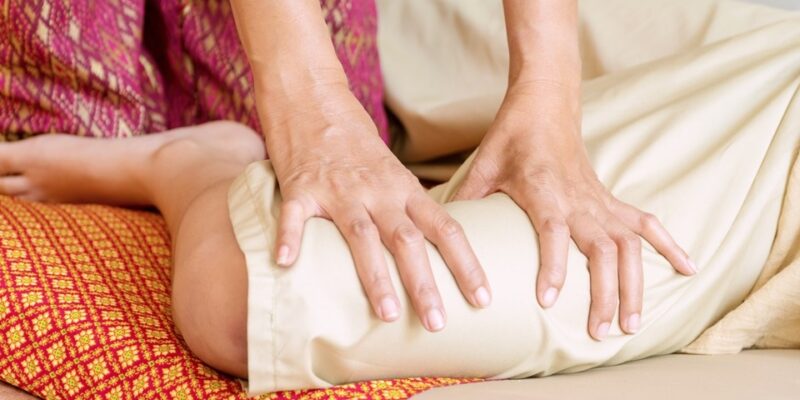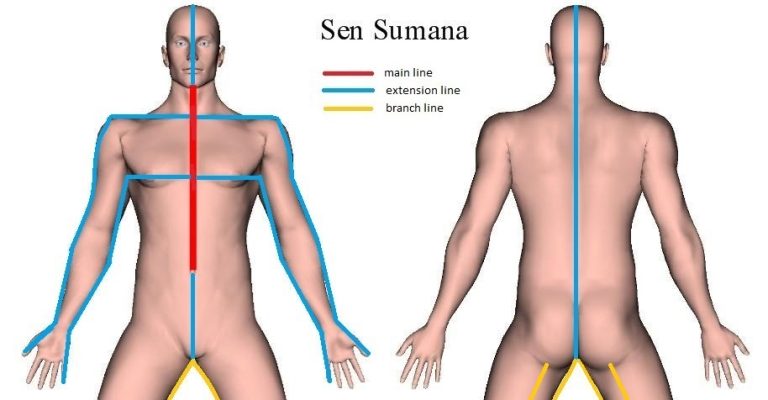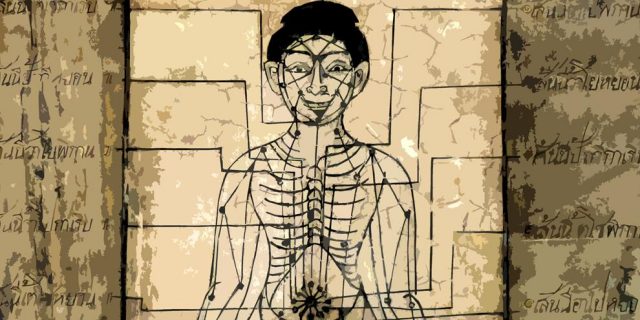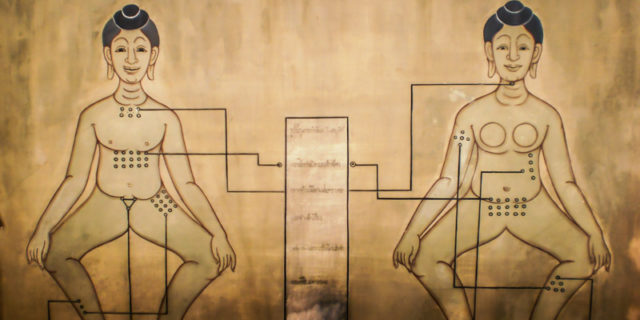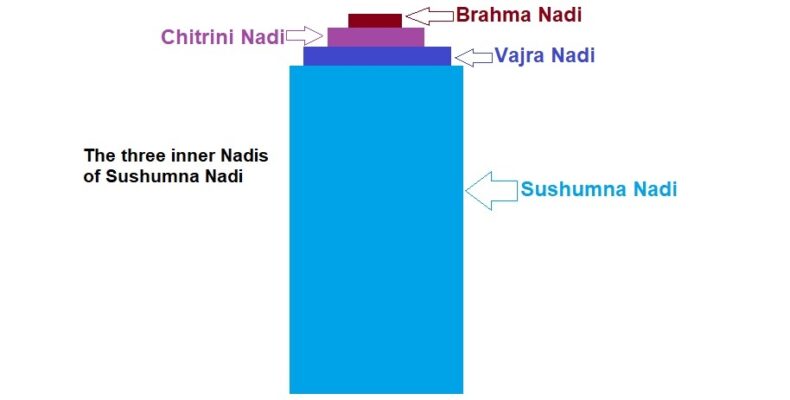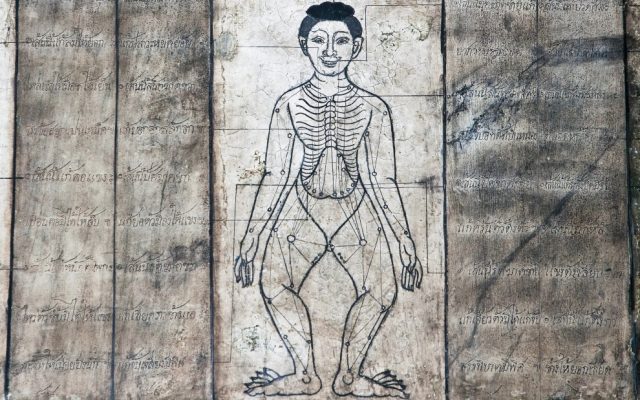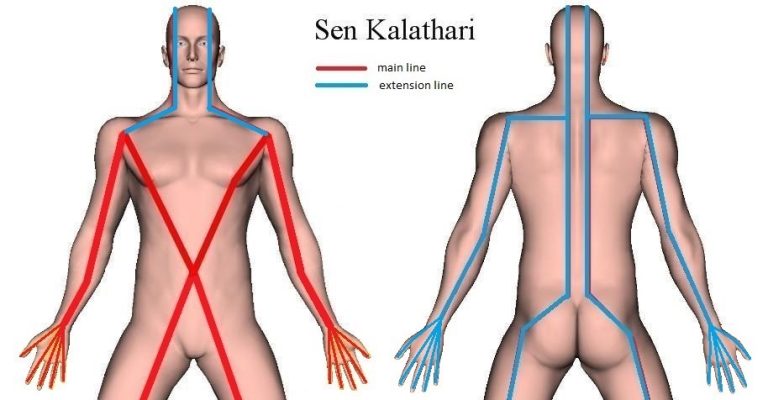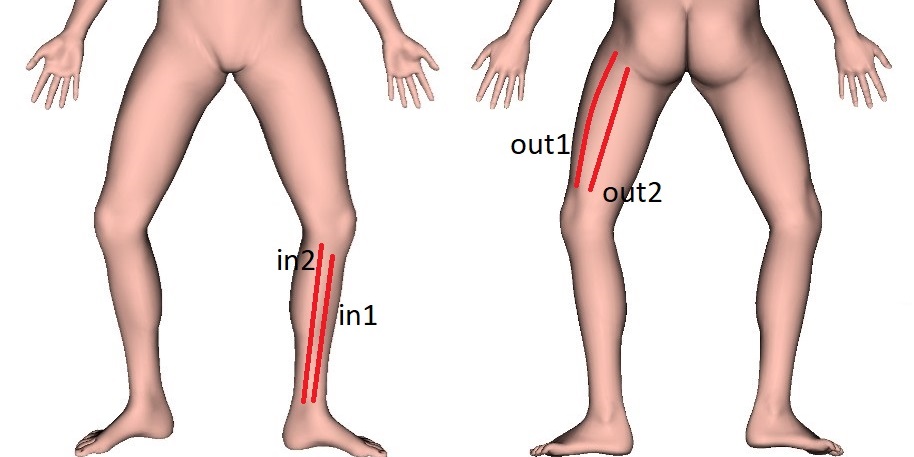
In this post, we’re going to take a look at how, in practice, the actual trajectories of the Thai Sib Sen Energy Lines are taught to Thai Massage students, and how to work on them.
Now, typically, the Sen Energy Lines are not treated as a whole (per Sen Line), but a therapist works with Sen Line sections located in individual body parts, rather than following a complete Sen Energy Line in one go.
It means that a Thai masseur will, for instance, first start treating the feet and legs — depending on the Thai Massage lineage or style — manipulate all Sen sections in the feet and legs, before going further up to treat the sections of the back, abdomen, chest, and so on. This is done out of practical reasons and the fact that there are no rules that oblige working the body Sen Line per Sen Line.

The consequence of this is that a therapist addresses a variety of different Sip Sen Line sections at the same time. The idea is that, because of giving a full body Thai Massage, eventually all major Sen Lines will have been treated at the end of the session.
Nevertheless, when Thai Massage therapists give targeted therapy, they will generally work (more intensively) on one or more specific Sen Lines that have a relationship with the ailment that is treated, and follow its or their entire trajectory or trajectories (i.e. pathways) through the body.
Sen Lines or parts of Sen Lines are usually worked way-and-back (or up-and-down, if you wish). There’s no specific direction that needs to be taken or first started with, although it sometimes depends on the Thai Massage lineage or teacher if there will be any rules to this.
To give an example: if one would work on a specific Sen Line section in the inner side of the lower leg starting near the ankle, one would go up giving pressure on the line (for instance, thumb pressure or palm pressure) following the leg up to the knee to subsequently work down again to the ankle. This can be repeated several times depending on the treatment type and goal of the session.
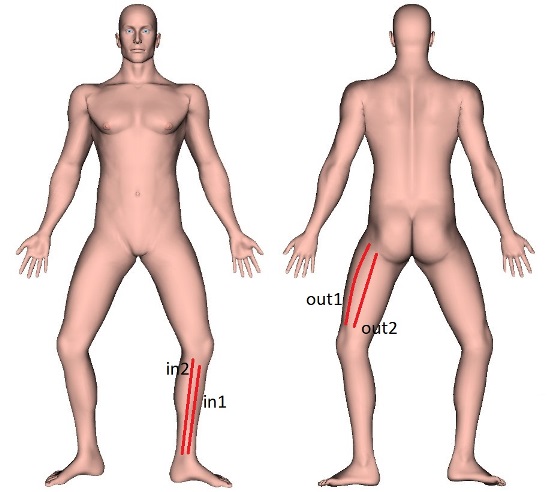
Subsequently, you will see that Thai Massage training courses will number the parts of the Sen Lines in order to give instructions about what to massage in the massage sequences you get taught.

So, to give an example, a training course workbook would state things like: “… give thumb-pressure on lines in1 and in2 of the lower left leg” or “… give palm-pressure on lines out1 and out2 of the upper left leg (the thigh).”
Line in1 would then mean Line 1 inside and Line out1 would mean Line 1 outside. In the case of the examples given in the image above: in1 would mean Line1 on the inside part of the lower left leg and out1 would mean Line1 on the outside part of the upper left leg (the thigh).
Thus, these numbers refer to parts of a certain Sen Energy Line. To again use the examples given above:
- Line in1 of the lower left leg refers to a part of Sen Sahatsarangsi.
- Line in2 of the lower left leg refers to a part of Sen Kalathari.
- Line out1 of the upper left leg (thigh) refers to a part of Sen Sahatsarangsi.
- Line out2 of the upper left leg (thigh) refers to a part of Sen Kalathari.
Typically in Thai Massage courses you will see that workbooks divide the whole body in numbered Sen Line parts and it’s up to you to make the (mental) connection with the actual Sen Lines, that is, to know on what Sen Line you’re working on.
Note that each individual massage school or teacher may number the Sen differently, not to talk about the fact that the Sen Line pathways taught also may be dissimilar, as we’ve already talked about in our post Different Sen Line Charts for the Same Sen Energy Lines.







